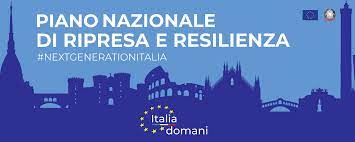European Innovation Council (EIC)
Horizon Europe is the European Union’s Framework Program for Research and Innovation for the period 2021-2027 – corresponding to the EU’s long-term budget – has a total budget of 95.5 billion, the largest transnational research and innovation program in the world, and is the successor to Horizon 2020. The Program is implemented directly by the European Commission (direct management), finances research and innovation or R&I support activities focused exclusively on civil applications and does so mainly through calls for proposals.
The European Innovation Council (EIC) is the flagship program of the European Union integrated in the third pillar (Innovative Europe) of Horizon Europe to identify, develop and expand innovative technologies and breakthrough innovations. In particular, the EIC Accelerator is the main instrument dedicated to start-ups and SMEs that, under the European Council Innovation (EIC), has incorporated the former SME Instrument. The main tools of which the EIC is composed to support the entire innovation cycle are the Pathfinder, the Transition and the Accelerator.
EIC Pathfinder
It supports early-stage research and innovation and offers outright grants of up to €3,000,000 (for Open calls) or €4,000,000 (for Challenges) to validate the scientific basis of the technology. In general, consortia of at least 3 different independent legal members established in at least 3 different eligible countries can participate in the program. The areas pertaining to the Challenge will be as follows.
- internal awareness.
- tools to measure and stimulate activity in brain tissue.
- cellular technologies and gene therapy.
- new pathways to green hydrogen production.
- life of engineered materials.
EIC Transition
Provides grants of up to € 2,500,000 to validate and demonstrate technologies in a relevant application environment and develop market readiness. Individuals (SMEs, spin-offs, start-ups, research organizations, universities) or small consortia (2 to 5 partners) may participate. The Challenge’s inherent areas are.
- medical devices.
- energy harvesting and storage technologies.
EIC Accelerator
It aims to support high-risk, high-potential SMEs with grants and blended finance: grant + equity, in the development and commercialization of new products, services and business models that shape new markets and generate jobs, growth and higher standards of living. Winners receive funding and support in the form of blended finance, which can amount to up to €2,500,000 in grants and €15,000,000 in equity investments.
for SMEs and startups developing innovative projects with high growth potential, which aims to facilitate technology development and validation in order to bring the technology to market. Projects must be high-risk and contribute to a radical market transformation. The EIC Accelerator supports development and pre-industrialization processes that include activities of:
- Prototyping and testing.
- Clinical studies.
- Up-scaling, design and construction.
- Adaptation to different market needs in different EU countries.
- Development of the entire sales structure and establishment of commercial partners.
- Design of a price model.
- Construction of an efficient communication and marketing strategy.

Piano Nazionale di Ripresa e Resilienza
Il PNRR, Piano Nazionale di Ripresa e Resilienza draws the measures that will have to implement in Italy the Next Generation EU program, in order to allow the full restart of the country after the stop caused by the Covid-19 pandemic.
The text of the Recovery Plan is divided into 6 missions, structural thematic areas of focus:
- A total of 49.2 billion euros is allocated to the digitization mission in order to promote and support the digital transformation of the country and the innovation of the production system and invest in two key sectors for Italy: tourism and culture. Among the main actions planned is the extension of Ultra Broadband and fast connections throughout the country, incentives for digital transition and the adoption of innovative technologies in the private sector, the digitization of Public Administration and the revival of tourism, with a digital and sustainable approach.
- 68.6 billion are allocated to the Green Revolution and Ecological Transition mission, with the aim of improving the sustainability and resilience of the economic system by ensuring a fair and inclusive transition. The main actions include investments and reforms for the circular economy and waste management, promotion of renewable energy funds, tax incentives to increase energy efficiency in buildings and investments to reduce the risks of hydrogeological instability. There is no clear indication in the Recovery Plan on the extension of the superbonus to 2023, a measure that in any case «is intended to be extended» also to encourage investment in the construction sector.
- on the front of Infrastructure and sustainable mobility, 31.4 billion euros are allocated, to allow the rational development of a modern, sustainable and extended transport infrastructure in all areas of the country. The actions foreseen range from the development of high speed to the modernization of regional railway lines, up to investments in green ports and digitalization of the logistics chain.
- The Education and Research mission rests on 31.9 billion resources, with the aim of strengthening the educational system, digital and STEM skills, research and technology transfer. Strengthening of nurseries, kindergartens and early childhood services, School 4.0, teacher training and reform of guidance, doctorate and degree programs are some of the actions planned.
- Women and young people are at the center of the Inclusion and Cohesion mission, for which a total of 22.4 billion euros in resources have been allocated. Overcoming the gender gap, improving access to the world of work for young people, strengthening active policy measures and employment centers, alongside interventions for people in fragile situations and the disabled are the pillars on which the mission envisaged by the text of the Recovery Plan is based.
- Then there is the Health mission, for which 18.5 billion euros in resources have been committed. The objective is to create a system of proximity, with the strengthening of structures on the territory and telemedicine. The «houses of the Community» will be the point of reference for integrated care, but among the actions there is the strengthening of home care, with the aim of making the home the first place of care, including through telemedicine and remote assistance.
IF YOU ARE INTERESTED IN PARTICIPATING AND WOULD LIKE TO RECEIVE MORE INFORMATION PLEASE CONTACT US!



